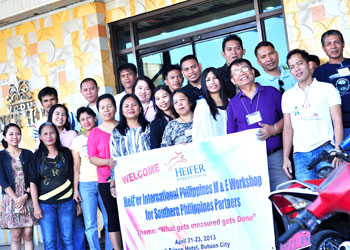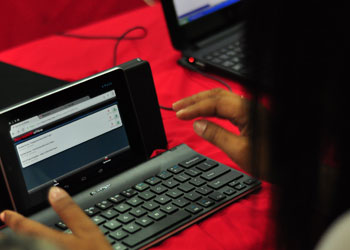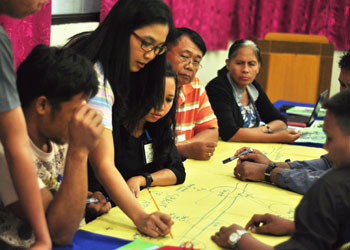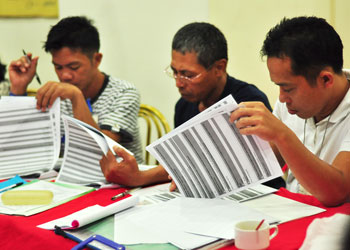Story by Karla Narcise-Rodulfo | PME Manager | Heifer Philippines
Photos by Jun Ayensa | Regional Program Manager | Heifer Southern Philippines
 A Monitoring and Evaluation (M&E) workshop was held for Heifer Southern Philippines partners April 21-23 in Butuan City, Agusan del Sur. Partner families, Community Animal Health Workers, a Community Facilitator Project Supervisor, enumerators from three project partners: HEED, TOUCH and Propegemus, and the Heifer Southern Philippines team attended the workshop, which introduced new streamlined and simplified M&E systems, tools and procedures to address the need for an evidenced-based monitoring and evaluation process.
A Monitoring and Evaluation (M&E) workshop was held for Heifer Southern Philippines partners April 21-23 in Butuan City, Agusan del Sur. Partner families, Community Animal Health Workers, a Community Facilitator Project Supervisor, enumerators from three project partners: HEED, TOUCH and Propegemus, and the Heifer Southern Philippines team attended the workshop, which introduced new streamlined and simplified M&E systems, tools and procedures to address the need for an evidenced-based monitoring and evaluation process.
 Irene Lacia, project supervisor of the HEED Foundation, said the workshop changed the way she thought, even in regard to her own family’s finances. “It made me realize and assess my family’s own important details like spending and savings; it seemed insignificant to me before. Baseline survey is really applicable to everyone,” she said.
Irene Lacia, project supervisor of the HEED Foundation, said the workshop changed the way she thought, even in regard to her own family’s finances. “It made me realize and assess my family’s own important details like spending and savings; it seemed insignificant to me before. Baseline survey is really applicable to everyone,” she said.
 The workshop introduced a new survey tool guided by the five categories of change and impact espoused by Heifer’s Theory of Change. The survey tool is flexible and can be used for baseline surveys to determine the situation of partner families before a Heifer project is implemented and can be used again at the end of the project to aid evaluators in determining impact and social changes contributed by the project.
The workshop introduced a new survey tool guided by the five categories of change and impact espoused by Heifer’s Theory of Change. The survey tool is flexible and can be used for baseline surveys to determine the situation of partner families before a Heifer project is implemented and can be used again at the end of the project to aid evaluators in determining impact and social changes contributed by the project.
After a review of the process and tools, the participants experienced answering the tool and the actual encoding of their response in tablets provided by Heifer’s Planning, Monitoring and Evaluation Department.
 “It is very new to me; the process is very systematic and advanced,” Nilda Udarbe, community facilitator for the Developing Dairy Zones for Smallholder Farmers in Agusan del Norte Dairy project, said. “Before, we used to have fewer partner families, but it took us a long time to complete the consolidation process. We needed to review and validate the figures before we can be sure it is right. But now with this system, once encoding is complete we can readily see the results in a more accurate and systematic way. Technology really made it easier for us; we can now focus on equally important tasks.”
“It is very new to me; the process is very systematic and advanced,” Nilda Udarbe, community facilitator for the Developing Dairy Zones for Smallholder Farmers in Agusan del Norte Dairy project, said. “Before, we used to have fewer partner families, but it took us a long time to complete the consolidation process. We needed to review and validate the figures before we can be sure it is right. But now with this system, once encoding is complete we can readily see the results in a more accurate and systematic way. Technology really made it easier for us; we can now focus on equally important tasks.”